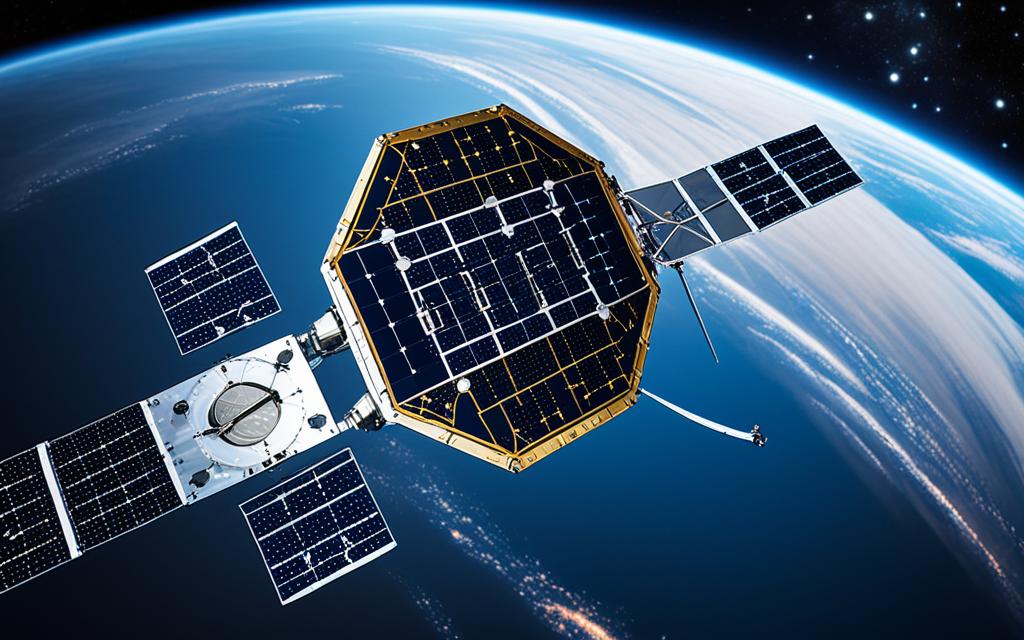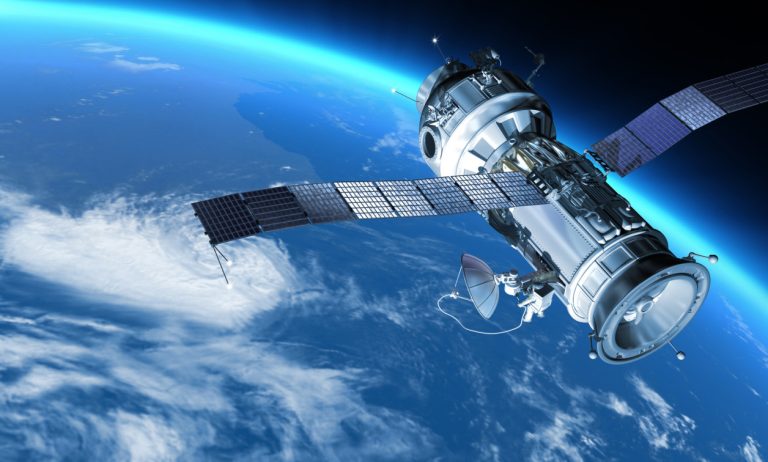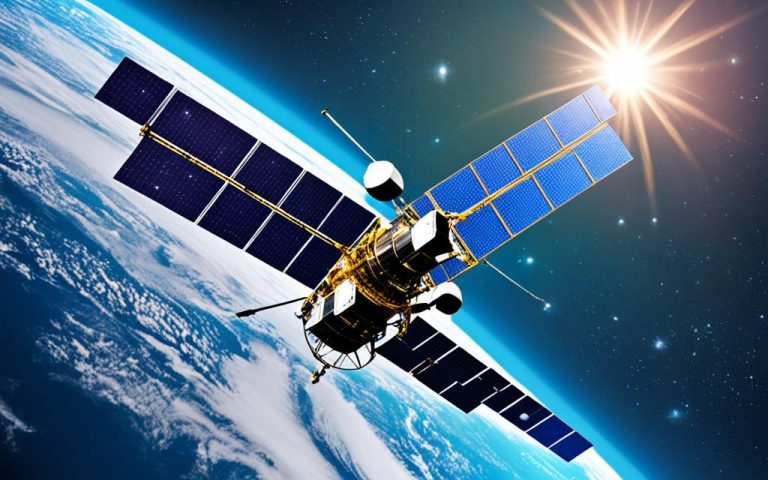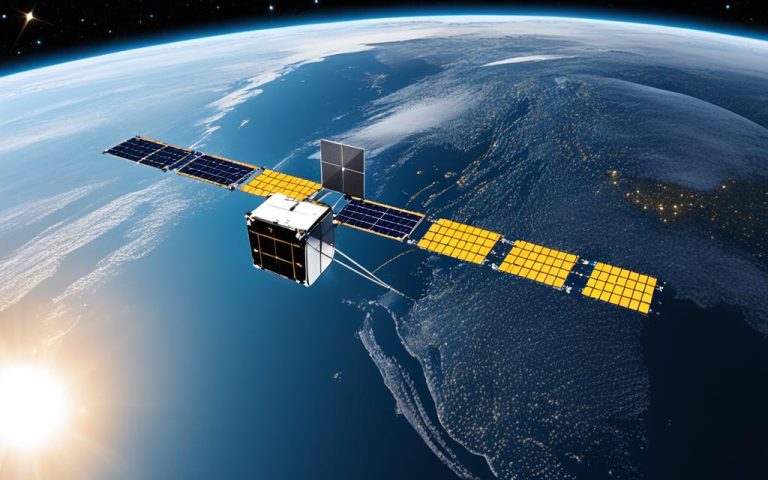Communication satellites play a crucial role in facilitating simultaneous communication among ground, sea, and airborne stations. However, the complexity of the operational environment in space presents challenges to the reliability of satellite systems.
To optimize the reliability of satellite networks, it is essential to implement effective redundancy strategies and ensure optimal attitude-oscillation control. Redundancy design reinforces stability, fault tolerance, and resistance to jamming in satellite communication systems.
Identifying critical subsystems and implementing redundancy strategies are crucial steps in ensuring reliable communication. Research has been focused on satellite reliability, redundancy design, and importance measures. However, there is a need for more realistic reliability modeling methods that consider the satellite operating environment.
This article aims to explore the topics of satellite system reliability, redundancy design, and propose a new method for optimizing reliability and redundancy in satellite communication systems.
By addressing these challenges and implementing robust strategies, satellite networks can achieve stable and reliable communication, meeting the needs of various sectors that rely on satellite connectivity.
Satellite Ground Station Design for Reliability
A satellite ground station serves as a critical link between a satellite and its users. However, various challenges can impact its reliability, necessitating the implementation of robust design strategies. To enhance ground station reliability, several factors should be considered, including:
Location Selection
Choosing a suitable location is crucial in minimizing signal loss and disruption. Factors such as topography, proximity to potential interference sources, and accessibility should be taken into account. Conducting thorough site surveys and assessing environmental conditions are essential steps in selecting an optimal location.
Antenna Optimization
The antenna system is a vital component of a ground station’s reliability. Optimizing the antenna system involves selecting the right size, type, and configuration based on the desired coverage area and frequency range. Additionally, protecting the antenna from weather conditions and interference improves its longevity and performance.
Redundancy and Backup
Implementing redundancy and backup for critical equipment is crucial in ensuring uninterrupted operation. Redundant power supplies, backup communication links, and spare parts help mitigate the risk of single points of failure. It is also essential to have backup plans for operation and maintenance procedures, allowing for seamless continuity in case of unexpected events.
Adherence to Best Practices and Standards
Following established best practices and standards within the industry ensures quality, consistency, and compatibility. Compliance with international regulations and guidelines enhances interoperability between different ground stations and satellite systems, further contributing to overall reliability.
Staff Training and External Assistance
Investing in staff training and competence plays a crucial role in maintaining reliable ground station operations. Well-trained personnel can identify and address issues promptly, minimizing downtime and optimizing performance. In cases where specialized expertise is required, seeking external assistance can provide additional support and knowledge.
Ground station design should prioritize reliability through location selection, antenna optimization, redundancy and backup measures, adherence to best practices and standards, and a well-trained staff. These considerations collectively contribute to the overall integrity and efficiency of satellite communication systems.
To illustrate the significance of satellite ground station design for reliability, consider the following table, which highlights the impact of various design factors:
| Design Factor | Impact on Reliability |
|---|---|
| Location Selection | Minimizes signal loss and disruption |
| Antenna Optimization | Enhances performance and longevity |
| Redundancy and Backup | Mitigates single points of failure |
| Adherence to Best Practices and Standards | Ensures compatibility and consistency |
| Staff Training and External Assistance | Improves operational competence and expertise |
In summary, the reliability of satellite ground stations depends on careful design considerations. By strategically selecting the location, optimizing the antenna system, implementing redundancy and backup measures, adhering to best practices, and investing in staff training, ground stations can achieve enhanced reliability and ensure seamless satellite communication.
Enhancing Satellite Communication System Security
Satellite communication systems are essential in today’s interconnected world. However, the increasing reliance on these systems also brings security risks that need to be addressed. To ensure the reliability and safety of satellite communication systems, a comprehensive approach to security is crucial. This section explores several strategies that can enhance the security of satellite communication systems, including encryption and authentication, redundancy and diversity, hardening and shielding, monitoring and updating, training and awareness, and testing and auditing.
Encryption and Authentication
Encryption and authentication are essential measures to protect satellite communication systems from unauthorized access and data breaches. By encrypting data and implementing robust authentication protocols, sensitive information can be safeguarded, preventing potential security breaches.
Redundancy and Diversity
Implementing redundancy and diversity in satellite communication systems can greatly enhance their resilience and reduce the impact of attacks. By having multiple redundant systems in place, any single point of failure can be mitigated, ensuring continuous and reliable communication even in the event of an attack.
Hardening and Shielding
Hardening and shielding measures are crucial to strengthen satellite communication systems against environmental hazards and interference. By implementing physical protection mechanisms and shielding techniques, the equipment can withstand external threats and maintain its functionality in harsh operating conditions.
Monitoring and Updating
Continuous monitoring and updating of satellite communication systems are essential to detect anomalies and address vulnerabilities. Regular updates to software and firmware, as well as real-time monitoring of system performance, can help identify and mitigate potential security risks.
Training and Awareness
Creating a security-conscious culture within the organization is essential for effective security management. By providing comprehensive training to personnel and raising awareness about security best practices, employees can become active participants in maintaining the integrity and confidentiality of satellite communication systems.
Testing and Auditing
Regular testing and auditing of security measures are crucial to verify the effectiveness of security controls and ensure compliance with industry standards. By conducting thorough security assessments, any weaknesses or vulnerabilities can be identified and addressed promptly, ensuring the continued security and reliability of satellite communication systems.
Adopting a multi-layered approach that incorporates these security strategies can help safeguard satellite communication systems against potential threats and ensure reliable and secure communication in an increasingly interconnected world.

Note: The image above represents the importance of implementing security measures in satellite communication systems.
Importance of Maintenance in Satellite Network Redundancy
In the realm of satellite network redundancy design, maintenance plays a pivotal role in ensuring reliable and continuous communication systems. It is essential to implement effective maintenance practices to optimize the overall reliability and performance of satellite networks.
Importance measures act as valuable tools to identify critical subsystems and determine the weakest components within complex satellite systems. By utilizing various methods and models, such as Bayesian network modeling, comprehensive importance analysis, multi-criteria importance measures, and reliability-based comprehensive importance, experts can accurately assess the vulnerability of different subsystems and prioritize maintenance efforts.
Given the constraints often faced in resource allocation for maintenance, selecting the appropriate importance measure is vital. This allows organizations to allocate their limited resources strategically, ensuring that maintenance efforts are directed towards the most critical components, ultimately maximizing the reliability and availability of satellite communication systems.
In the context of redundancy design, the identification of critical subsystems is a fundamental step that influences the entire process. By pinpointing these crucial components, designers can tailor the redundancy strategy to effectively fortify the weakest links within the satellite network. This approach ensures a comprehensive reliability optimization framework, safeguarding against potential failures and disruptions.
| Key Factors | Benefits |
|---|---|
| Effective maintenance practices | – Ensures reliable performance – Extends the lifespan of components – Minimizes downtime and costly repairs |
| Importance measures | – Identifies critical subsystems – Determines weakest components – Guides resource allocation for maintenance |
| Critical subsystem identification | – Tailors redundancy design – Enhances reliability optimization – Mitigates potential failures and disruptions |
Key Takeaways
- Maintenance is a crucial aspect of satellite network redundancy design.
- Importance measures are valuable tools for identifying critical subsystems and prioritizing maintenance efforts.
- Choosing the appropriate importance measure is crucial for resource-constrained maintenance.
- Identifying critical subsystems during redundancy design ensures efficient and effective reliability optimization.
Conclusion
Satellite network redundancy is crucial for ensuring reliable communication systems. By optimizing reliability through enhanced redundancy design, considering the satellite operating environment, and implementing robust maintenance practices, satellite communication systems can achieve stable and robust performance. These strategies, such as ground station design, security enhancements, and the importance of maintenance, contribute to the overall reliability and efficiency of satellite networks.
With ongoing advancements in technology and continuous research in the field, the reliability and redundancy of satellite networks are expected to continue improving. This progress is essential in meeting the demands of critical connectivity in various sectors, including telecommunications, emergency services, remote monitoring, and more. By prioritizing satellite network redundancy and reliable communication systems, organizations can ensure uninterrupted communication and maintain seamless operations even in challenging environments or during unforeseen events.
As we move forward, the continued focus on satellite network redundancy will enable the development of advanced communication capabilities, allowing for faster data transmission, increased bandwidth, and higher reliability. This will pave the way for enhanced connectivity on a global scale, supporting the growth of industries, facilitating remote operations, and enabling efficient disaster recovery processes. Maintaining reliable communication systems through satellite network redundancy remains a key priority for organizations across sectors.
FAQ
What is the importance of redundancy in satellite networks?
Redundancy in satellite networks is crucial as it enhances stability, fault tolerance, and resistance to jamming in communication systems. It reinforces reliability by providing backup systems in case of failures or disruptions.
How can the reliability of ground stations in satellite networks be enhanced?
The reliability of ground stations can be enhanced by considering factors such as location selection, optimizing the antenna system, implementing redundancy and backup, following best practices and standards, providing staff training, and seeking external assistance.
What strategies can be implemented to ensure the security of satellite communication systems?
Strategies such as encryption and authentication, redundancy and diversity, hardening and shielding, monitoring and updating, training and awareness, and testing and auditing can be implemented to ensure the security of satellite communication systems.
How does maintenance contribute to satellite network redundancy design?
Maintenance plays a crucial role in satellite network redundancy design. Importance measures are used to identify critical subsystems and determine the weakest components. By choosing the right importance measure, efficient and effective reliability optimization can be achieved.
How can satellite networks achieve stable and robust performance?
Satellite networks can achieve stable and robust performance by optimizing reliability through enhanced redundancy design, considering the satellite operating environment, implementing robust maintenance practices, and ensuring ground station design and security enhancements.



















